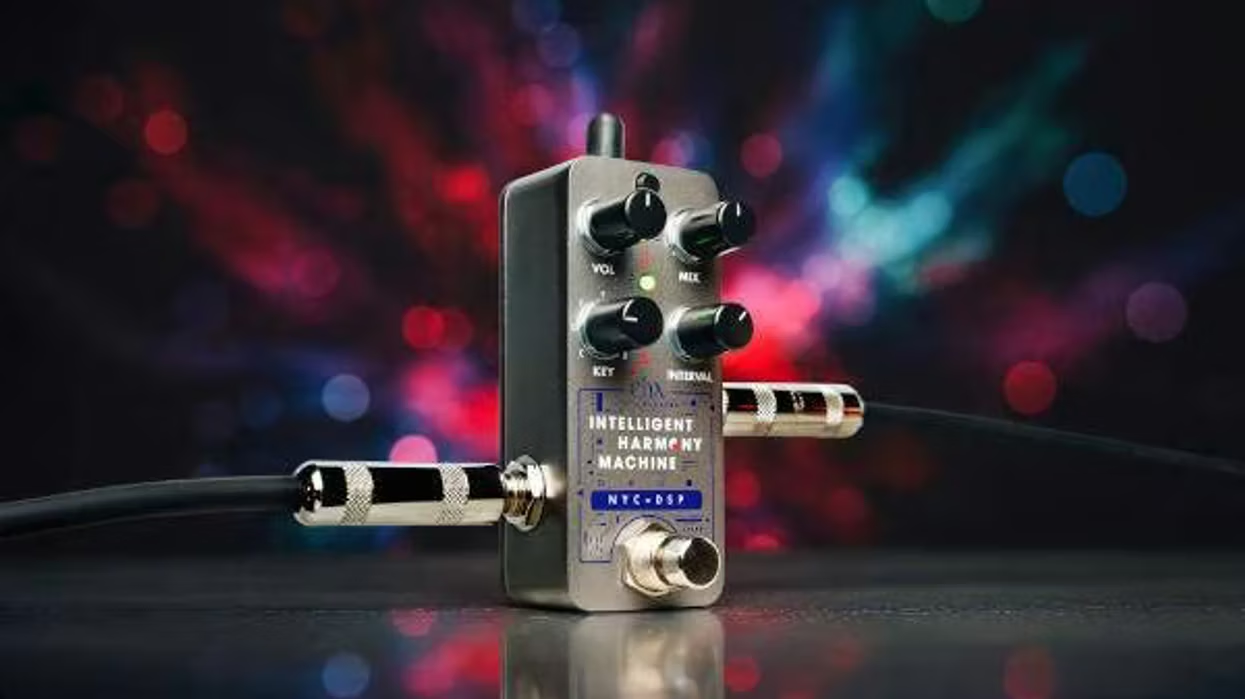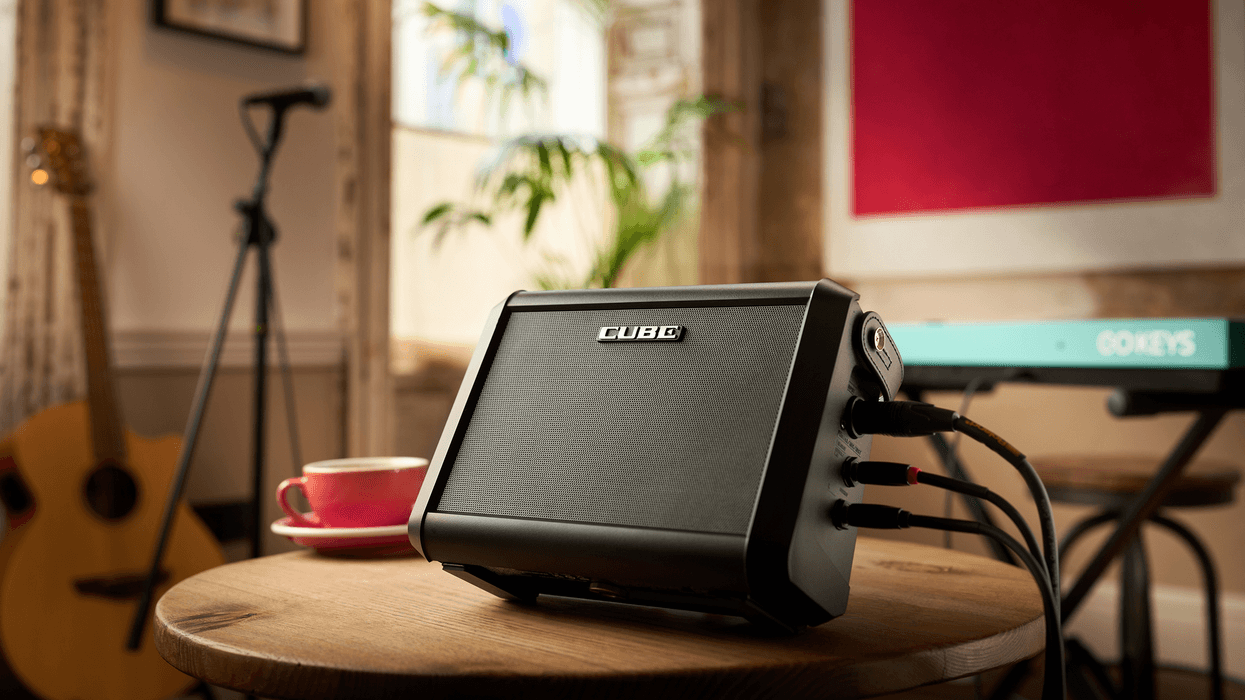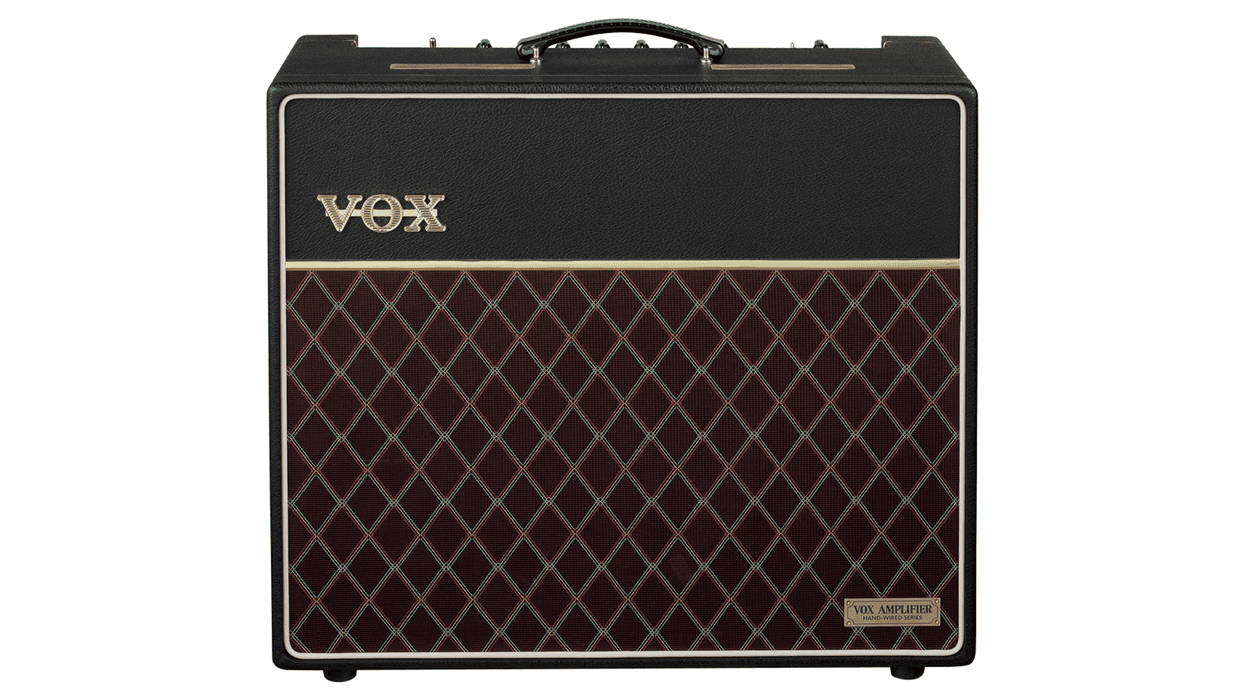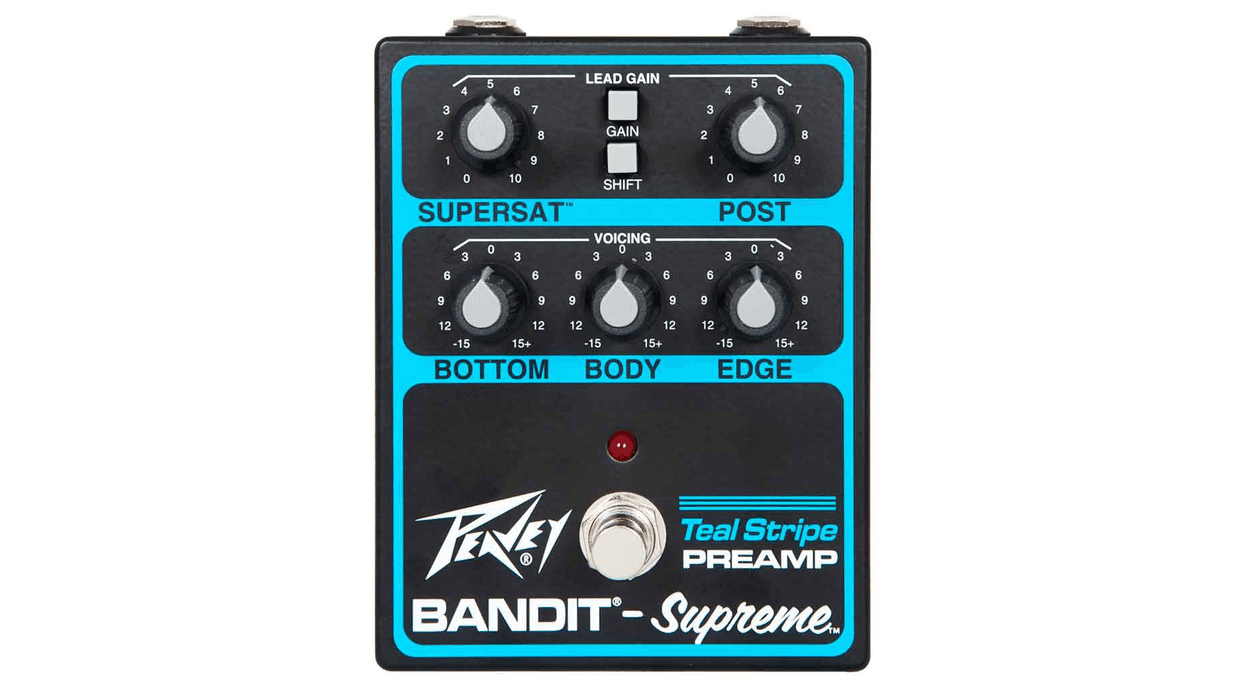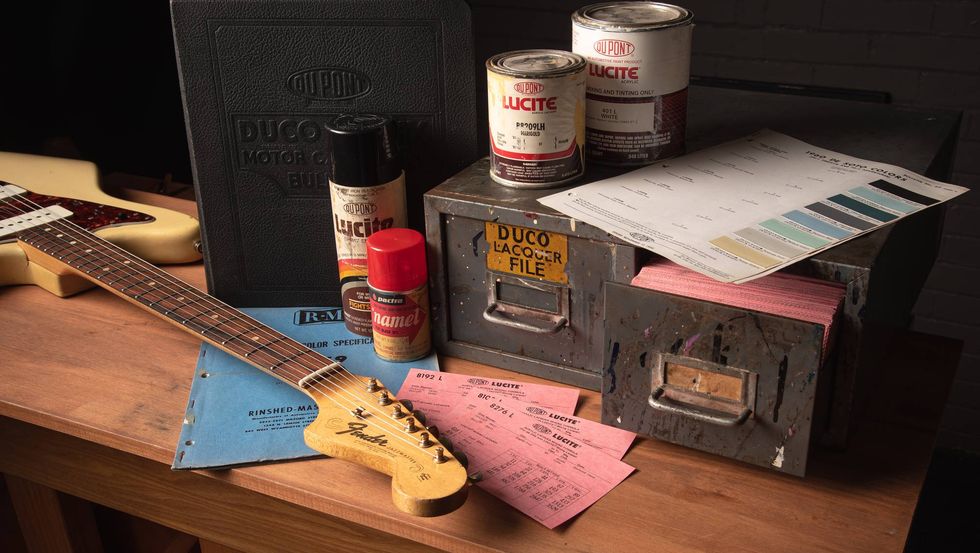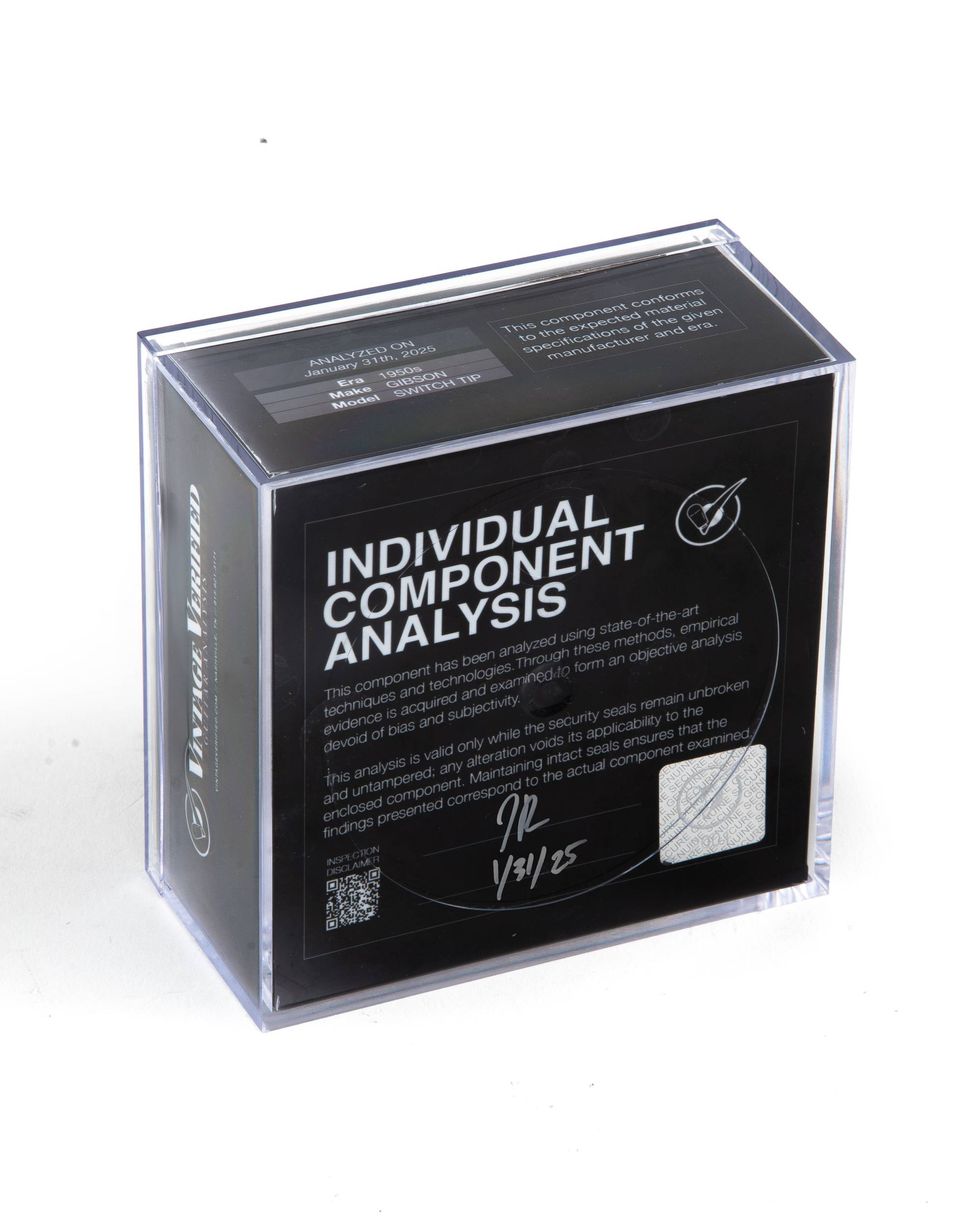RatingsPros:Huge collection of cool fuzz flavors. Well made. Fair price. Cons: Abandon subtlety, all ye who enter here. Street: $249 Damnation Audio Ugly Twin damnationaudio.com | Tones: Ease of Use: Build/Design: Value: |
Damnation Audio’s Ugly Twin is a perfect example of the whole being greater than the sum of its parts. And in this case, it’s a spectacularly mutated whole.
The Ugly Twin combines three gain effects in a single enclosure for results than can be far from ordinary. In order of appearance, you get a near-clone of the Dan Armstrong Green Ringer octave fuzz, a single-transistor booster reminiscent of EHX’s LPB-1, and a hybrid silicon/germanium fuzz, with an added passive 3-band EQ section and active buffer stage.
There’s a dedicated footswitch for each effect, providing seven possible combinations (each effect alone, octave plus boost, octave plus fuzz, boost plus fuzz, and all three together). The effect order is fixed, and each section does pretty much what you’d expect. The surprises occur when you cascade the stages into each other.
Mix and Mash
Each effect’s tone varies dramatically according to input level, so boosting any effect colors everything downstream. The circuit isn’t dynamic in the sense that you get crispy-clean tones by rolling back your volume knob. It’s hard to scrub the dirt off these sounds. But what a splendid cavalcade of filth!
Depending on your settings, tones range from metallic chunk to piercing octaves to sick, swollen fuzz. It’s not only the distortion levels that change, though. The speed and intensity of note attack, sustain and compression characteristics, and the harmonic content are equally variable—and that’s before you factor in the wide-ranging EQ section. The first audio clip is a grab bag of such mixed-effect sounds.
Let’s take a closer look at the individual effects.
It’s Not Easy Being Green
Green Ringer-style octave circuits can be fussy. They’re not very gainy, and their engaged level can be quieter than bypassed. The original Dan Armstrong Green Ringer had no controls at all, but Ugly Twin’s added “ugly” switch provides just the right boost in front of the octave-generating components, yielding a clearer octave effect and expanding the range of the octave’s influence on the boost and fuzz sections. When you roll back your guitar’s volume knob, tones don’t get cleaner. They get weirder. Expect ring-modulated chaos, especially with double-stops and chords.
You can hear the ugly switch in action in the second audio clip. I recorded the initial clean riff with no effects, and then reamped it through the octave effect—first at the traditional Green Ringer level, and then with the ugly switch activated.
The boost stage has sufficient gain to clobber your amp if desired. And since the fuzz section has no gain control, the oversized boost knob does the job when the latter two sections are engaged. The third audio clip showcases various boost levels, commencing with the effect bypassed.
Not Too Anything
Goldilocks would dig the fuzz stage. It’s not too bright, not too dark, not too overpowered, and not too wimpy. Its well-voiced tone controls make it a chameleon, capable of mimicking Fuzz Faces, Tone Benders, and Big Muffs, as heard in the fourth audio clip (after a bypassed example). An internal trim pot sets the bias of the germanium transistor.
The Ugly Twin’s circuit board features full-sized, through-hole parts and no board-mounted jacks. The layout is clean, the assembly tidy. The pedal runs on standard 9V power supplies. (There’s no battery compartment.) The look? Well, ugliness is in the eye of the beholder. But with its Pepto-Bismol pink and bland-but-bold typography, this pedal probably won’t be the talk of the 2019 Venice Biennale.
The Verdict
The Ugly Twin assembles familiar functions in a fresh way. The result is a vast collection of aggressive fuzz flavors, with an emphasis on the nasty, brutish, and short-circuited. The pedal is nicely made—and entirely too much fun. And since it truly is three effects in one (four, if you count the active post-fuzz EQ as a separate effect), $249 is a nice price.
Watch the First Look:









